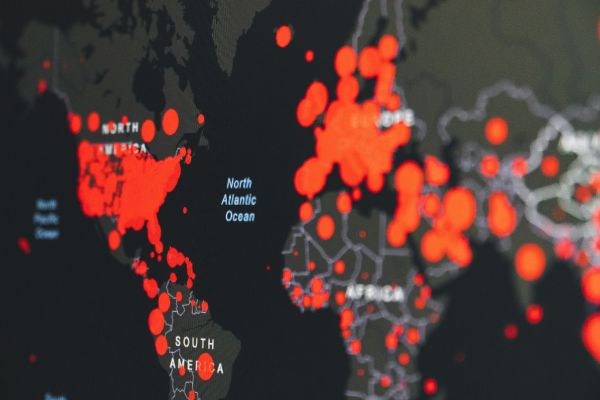Credit-linked structured products offer investors the opportunity to pursue significantly higher yields compared to the risk-free rate and provide an alternative to traditional corporate bond investments.
In the early 2000s, the popularity of credit default swaps and other credit instruments surged, driving strong interest in this sector. However, these products became unpopular following the real estate bubble, the credit crunch of 2007, and the collapse of Lehman Brothers in 2008. The complexity and lack of transparency surrounding credit-linked products escalated to unsustainable levels, with many market participants severely underestimating the credit risk posed by banks and major corporations.
Before 2007, credit risk was rarely a major concern for investors dealing with A-rated entities, aside from basic diversification strategies. Following the global financial crisis, it took nearly a decade for retail markets in most countries to regain confidence in credit-linked products at any significant scale. Additionally, the role these instruments played in the crisis prompted substantial regulatory reforms and ongoing scrutiny of the sector.
Credit indices or single names
Credit structured products can be linked either to individual companies or credit indices. The leading credit index provider is Markit. Its series of indices dominates the space and accounts for three of the top five underlyings for structured products classified within the credit asset class. Products linked to Markit indices account for approximately 14% of products in this category. The remainder of the products are mostly linked to single company names. The most common underlying company for credit structured products is Volkswagen, while Intesa Sanpaolo is the company with the highest notional amount invested across linked products.
IHS Markit is the leading provider of credit index data. Its Markit iTraxx Europe Crossover Index includes 75 of the most liquid sub-investment-grade companies, while the Markit iTraxx Europe Index features the 125 most liquid European companies in the CDS market. These indices offer varying levels of exposure that can be tailored to match investors’ risk appetite.
| Underlying | Product issuance | Notional (USDm) |
| Markit iTraxx Europe Crossover | 386 | 873.91 |
| Volkswagen | 318 | 500.2 |
| Markit iTraxx Europe | 293 | 525.99 |
| Markit CDX North America High Yield | 293 | 743.81 |
| Intesa SanPaolo | 241 | 1374.56 |
| ArcelorMittal | 206 | 487.31 |
| Mercedes Benz Group | 200 | 272.1 |
| Heidelberg Materials | 167 | 344.93 |
| Unicredit | 154 | 740.35 |
| Mediobanca | 143 | 723.6 |
In the U.S., equivalent indices include the Markit North American Investment Grade CDX Index, comprising 125 investment-grade companies, and the Markit CDX North America High Yield Index, which includes 100 sub-investment-grade companies. The High Yield Index is particularly popular in structured products. However, the primary U.S. credit index has surprisingly not emerged as a favoured choice for credit-linked products.
Credit indices provide opportunities for higher income while offering different types of exposure. Some products are directly tied to the index in a basket structure, while more complex, leveraged solutions use “tranche” approaches. In tranche products, losses accumulate in layers. For example, a note may absorb 10% of capital losses for each of the first ten defaults. A lower tranche product could allow for five defaults but incur higher losses, such as 20%, for subsequent defaults. While these products can deliver enhanced returns, they are significantly more complex to value, hedge, and manage.
By comparison, single-name credit-linked products are much simpler. These pay a coupon until a credit event occurs, at which point the product terminates, and investors receive the recovery value as a capital payment. Such products resemble corporate bonds but can be tied to a broader range of credit events, requiring investors to fully understand the circumstances under which income or capital could be at risk.
Regional market analysis
| Region | Product issuance | Notional (USDm) |
| Switzerland | 2100 | 2918.62 |
| Germany | 1974 | 2140.08 |
| Italy | 851 | 4622.53 |
| Finland | 553 | 1456.42 |
| Sweden | 541 | 811.34 |
Credit-linked products have gained traction in specific markets. Switzerland currently has the largest product number of credit-linked products by issuance. Recent examples include the Credit Linked Note in USD on UBS Group Coupon, offering a coupon of 4.0485% p.a. from Vontobel (SRP ID:49192003), which is a one-year product paying a single coupon at maturity as long as no credit event occurs, and a five-year note from Leonteq paying EUR 4.65% p.a. linked to the Air France-KLM (SRP ID:49191979). These products are typical examples credit-linked structured products.
Credit-linked products are also popular in Scandinavia, particularly Sweden, Finland, and Norway, where there is a strong fixed-income investment culture. These products naturally appeal to investors seeking higher yields within a related asset class. Regulatory restrictions on equity-linked structured products in these countries, due to their perceived complexity and risk, have further driven demand for credit-linked alternatives.
In Italy, single-name credit-linked products are especially popular due to the market's familiarity with prominent companies carrying higher credit risk. Italian investors are accustomed to assessing this type of exposure, with leading underlyings including Intesa Sanpaolo, UniCredit, and Mediobanca. The volatility of the global banking sector has elevated yields for these names, making them attractive to investors.
While both fixed-income and equity-linked structured products offer solutions for generating high income, the credit sector provides a compelling alternative for achieving similar goals.
Tags: Structured EdgeImage courtesy of: Martin Sanchez / unsplash.com










